Goheal: Is the failure of cultural integration the "common cause of death" for all acquisitions of listed comp
"Those who share the same desire will win, and those who share the same boat will prosper." Sun Tzu's Art of War pointed out the essence of organizational synergy more than 2,000 years ago. However, in the M&A battlefield of the modern business world, even if you take control, it does not mean that you have won the "hearts of the people". Many companies, especially listed companies, often ignore a hidden killer in the applause and cheers after completing a paper agreement - cultural integration. Goheal has repeatedly verified in many years of transaction practice: control can be transferred, governance rights can be reconstructed, but cultural migration is the "last mile" that determines the success or failure of mergers and acquisitions.
Don't think that cultural integration is just a "soft indicator", in fact it is often surprisingly hard.
According to statistics, 60% of Chinese corporate mergers and acquisitions failed due to cultural conflicts, which is much higher than financial risks (32%) and strategic mismatches (28%). In cross-border mergers and acquisitions, this failure rate even soars to 75%. The story of TCL's acquisition of Alcatel is still being repeatedly analyzed in business school classrooms. Cultural conflict is like "boiling a frog in warm water". It seems painless, but it can seriously damage the vitality of the company during the integration period, or even destroy it.
Goheal observed that in the due diligence stage of mergers and acquisitions, most acquirers focus on "explicit indicators" such as financial reports, legal affairs, and business synergy. Very few people will ask: Are the people of this company willing to work with us? Can they listen to us? In fact, this is the real core of the problem.
American Goheal M&A Group
Let's take a live example in 2025. Soon after the Cultural Great Wall Group acquired an educational subsidiary, 40% of the core teaching team resigned collectively due to cultural friction. And they completely lost trust in the new management just because an indicator was changed from "teaching satisfaction" to "class renewal rate". This is not a salary conflict or an equity dispute, but a naked collapse of values.
Mergers and acquisitions are not just the grafting of two companies, but also the collision of two cultures. When the power structure, communication mechanism, incentive model, and organizational habits are misaligned, any "detail" may detonate the trust chain of the entire organization.
We have summarized the three most deadly cultural conflict triggers in Goheal's front-line practice:
First, the power structure collapse syndrome. The control of many founders of entrepreneurial companies over the team comes not only from equity, but also from cultural leadership. After the acquisition is completed, the founder withdraws, and the old employees feel that the "organizational soul" has disappeared, forming a cultural vacuum, and values begin to drift. For example, after a smart hardware company was acquired by a listed company, it shifted from "technology-driven" to "finance-oriented". The original team was extremely resistant, and the efficiency of new product development dropped by 60%.
Second, the organizational trust chain is broken. Before the acquisition, the founder led, the command was clear, and the information chain was efficient; after the acquisition, professional managers took over, but they had no emotional foundation for the team, and lacked capital support for employee trust. In the "snake swallowing elephant" case like Jiyao Holdings' acquisition of Xiuzhen Pharmaceutical, the original target employees generally felt "hit by dimensionality reduction" and had intense resistance, but no one really repaired this "broken chain".
Third, the incentive mechanism is misaligned. Startups tell stories about options and paint a rosy picture, and employees are willing to endure hardships; but listed companies focus on short-term profits and have more standardized incentives. As a result, the original team that "fought for the vision" fell into the cultural embarrassment of "struggling for KPI". The acquisition of Cultural Great Wall hit a minefield: the teachers who originally focused on teaching experience suddenly had to be responsible for the renewal rate, the value system was subverted, and the management encountered a collective trust crisis.
Therefore, culture is not poetry and distance, but a real business soil.
Goheal believes that to solve cultural conflicts, we cannot rely solely on "emotional cards", but should move towards systematic and engineering governance. We propose the "three-level cultural penetration method": from the "quantitative diagnosis of cultural compatibility" before the acquisition, to the "transitional cultural design" during the delivery period, and then to the "two-way consensus building" during the integration period, each step needs to be carefully controlled.
For example, in the classic case of Geely's acquisition of Volvo, the reason why the two sides were able to achieve cultural symbiosis was that the Chinese team did not blindly "conquer", but achieved true cultural integration through three core measures:
1. Retain the independent decision-making power of Volvo's core management;
2. Hold cross-cultural integration meetings every month to evaluate conflict points;
3. Adopt a "dual track system" in the R&D system, that is, the Chinese side is responsible for cost control, and the Swedish team continues to lead innovation.
This is not a simple "respect", but a highly intelligent "cultural nesting" structure. Only by making the two cultures visible to each other and coexisting with each other can a real synergy be formed.
Of course, there are special "trap maps" for cultural integration in different scenarios.
For example, in the "snake swallowing elephant" merger and acquisition, the acquirer with a smaller market value acquires a company with a valuation far higher than its own, which will form a typical "organizational class gap". The process of Jiyao Holdings' acquisition of Xiuzhen Pharmaceutical is a typical example of this tension. We suggest that by establishing a "shadow board of directors" mechanism, that is, retaining the right of key executives of the target company to participate in strategic discussions under the premise that actual control has been transferred, the "soft landing" of cultural discourse power can be achieved.
Another example is cross-industry mergers and acquisitions. When cultural enterprises such as Cultural Great Wall enter the field of education, a typical "cognitive generation gap" has emerged: artistic creation is about inspiration, sensibility, and flexibility, while education emphasizes standardization, measurability, and consistency. If the two parties do not set up the position of "cultural translator", it is very likely that they will talk at cross purposes and cause misunderstandings.
More noteworthy is that regulators have also begun to pay attention to cultural integration issues. The Shenzhen Stock Exchange has required the addition of "cultural compatibility instructions" to merger and reorganization documents. From 2025, some transactions will also need to provide "organizational entropy forecast reports" to include cultural conflicts in the merger and reorganization risk map.
Goheal actively cooperates with this trend and has developed the "VCI Compatibility Index System", which provides a digital "cultural radar" for the early stage of mergers and acquisitions through semantic analysis, organizational language modeling, and value questionnaire matching. We believe that only by truly incorporating cultural integration into the merger and acquisition budget, merger and acquisition timetable, and integration responsibility system can enterprises complete the transition from "acquisition" to "integration".
Goheal Group
However, let us return to the cruel question: where does the merger and reorganization of listed companies die?
Finance? Strategy? Due diligence? None of them are the essence. The real cause of death is often the ignored soft line - culture.
M&A is not robbery, not 1+1=2, but more like a marriage. Once a cultural conflict breaks out, it will not destroy the organization immediately, but it is like a time bomb buried in the heart, and will eventually explode in the most critical performance season.
Next time, when you discuss an M&A case in the board of directors, in addition to asking "how much money? How to divide the equity?" Maybe you should ask: "Can we really work together?"
And this is the "truth" that every M&A consultant of Goheal often reminds customers on the spot. If you ignore it, it may become the only "out-of-control variable" that you can't understand in the beautiful PPT after the acquisition.
[About Goheal] Goheal is a leading investment holding company focusing on global M&A holdings. It has deeply cultivated the three core business areas of listed company control acquisition, listed company M&A reorganization and listed company capital operation. With its deep professional strength and rich experience, it provides enterprises with full life cycle services from M&A to reorganization to capital operation, aiming to maximize corporate value and long-term benefit growth.


